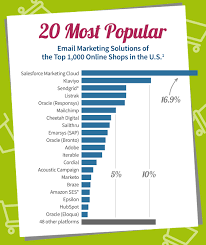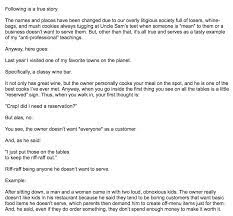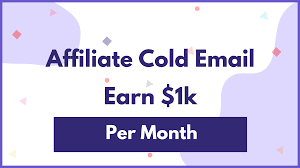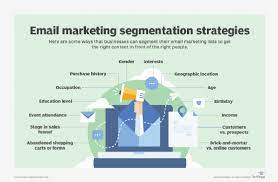Top Email Marketing: Boost Your Business with Effective Communication
In today’s digital world, email marketing has become an essential tool for businesses to connect with their audience and drive growth. With its cost-effectiveness, wide reach, and ability to deliver personalized messages, email marketing has proven to be a powerful strategy for businesses of all sizes. In this article, we will explore the top email marketing practices that can help you take your business to new heights.
Building a Quality Email List:
The foundation of successful email marketing lies in having a quality email list. Instead of purchasing or renting lists, focus on growing your own organically. Offer valuable content or incentives in exchange for visitors’ email addresses on your website or social media platforms. This way, you will attract genuinely interested subscribers who are more likely to engage with your emails.
Personalization and Segmentation:
Gone are the days of generic mass emails. Today’s consumers expect personalized content that resonates with their interests and needs. Segment your email list based on demographics, purchase history, or engagement levels to deliver targeted messages that speak directly to each segment’s preferences. Personalization can significantly increase open rates, click-through rates, and conversions.
Compelling Subject Lines:
Your subject line is the first impression you make on recipients. Craft compelling subject lines that grab attention and entice readers to open your emails. Keep them concise, clear, and relevant to the content inside while avoiding spammy language or excessive capitalization.
Engaging Content:
Once recipients open your emails, it’s crucial to provide them with valuable and engaging content. Tailor your message based on the recipient’s interests or previous interactions with your brand. Use a conversational tone and include visually appealing elements such as images or videos to capture attention.
Call-to-Action (CTA):
Every email should have a clear call-to-action that directs readers towards the desired action – whether it’s making a purchase, signing up for an event, or downloading a resource. Make your CTA prominent, visually appealing, and compelling to encourage higher click-through rates.
Mobile Optimization:
With the increasing use of smartphones, it’s vital to ensure your emails are mobile-friendly. Optimize your email templates to display correctly on various devices and screen sizes. Test your emails across different platforms and use responsive designs to provide an excellent user experience for mobile users.
A/B Testing:
To continuously improve your email marketing campaigns, conduct A/B tests on different elements such as subject lines, content layouts, CTAs, or send times. This data-driven approach allows you to identify what resonates best with your audience and make informed decisions based on the results.
Analytics and Tracking:
Measure the success of your email campaigns by tracking key metrics such as open rates, click-through rates, conversion rates, and unsubscribe rates. Utilize analytics tools provided by email service providers to gain insights into your audience’s behavior and refine your strategies accordingly.
Automation:
Save time and enhance efficiency by using automation tools for tasks like welcome emails, abandoned cart reminders, or personalized follow-ups based on user actions. Automation allows you to deliver timely messages without manual intervention while nurturing leads or engaging with customers.
Compliance with Data Protection Regulations:
Lastly, ensure compliance with data protection regulations like GDPR (General Data Protection Regulation) or CCPA (California Consumer Privacy Act). Obtain explicit consent from subscribers before sending them marketing emails and provide easy options for unsubscribing.
By implementing these top email marketing practices into your strategy, you can unlock the full potential of this powerful communication tool. Remember that building strong relationships with your subscribers through valuable content and personalized experiences is key to achieving long-term success in email marketing.
9 Frequently Asked Questions about Top Email Marketing in the UK
- What email marketing is best?
- Which tool is used for email marketing?
- What is one of the best email marketing tools in 2022 and why?
- What are the 4 types of email marketing?
- What are the 3 types of email marketing?
- Who has the best email marketing?
- Which email platform is best?
- What is the 80/20 rule in email marketing?
- Who is the best email marketer in the world?
What email marketing is best?
When it comes to determining the “best” email marketing platform, it ultimately depends on your specific needs and preferences as a business. However, there are several popular and highly regarded email marketing platforms that are widely recognized for their features, ease of use, and overall effectiveness. Here are a few top contenders:
- Mailchimp: Mailchimp is one of the most popular email marketing platforms available. It offers a user-friendly interface, customizable templates, advanced segmentation options, automation features, and detailed analytics. Mailchimp also integrates seamlessly with various e-commerce platforms.
- Constant Contact: Constant Contact is known for its ease of use and beginner-friendly interface. It provides a wide range of customizable templates, list segmentation options, automation tools, and robust reporting features. Constant Contact also offers additional features like event management and social media marketing.
- SendinBlue: SendinBlue is a comprehensive email marketing platform that offers powerful automation capabilities along with SMS marketing functionality. It provides intuitive drag-and-drop editors for designing emails, advanced personalization options, A/B testing capabilities, and detailed analytics.
- ConvertKit: ConvertKit is designed specifically for creators such as bloggers, podcasters, and YouTubers who require simple yet effective email marketing solutions. It offers easy-to-use automation features, customizable opt-in forms, subscriber tagging options for targeted campaigns, and integration with various content management systems.
- GetResponse: GetResponse is an all-in-one online marketing platform that includes email marketing as one of its core features. It provides a user-friendly interface with drag-and-drop email builders, automation workflows, landing page creation tools, webinar hosting capabilities, and advanced analytics.
These platforms have their unique strengths and pricing structures that may suit different businesses based on their size or industry requirements. Before choosing an email marketing platform, consider factors such as your budgetary constraints, desired features (such as automation or segmentation), integration options with other tools, and scalability for future growth. It’s also recommended to take advantage of free trials or demos offered by these platforms to determine which one aligns best with your business goals.
Which tool is used for email marketing?
There are several popular tools available for email marketing. Some of the widely used ones include:
- Mailchimp: Mailchimp is a user-friendly platform that offers a range of features, including email campaign creation, automation, audience segmentation, and analytics. It caters to businesses of all sizes and provides customizable templates to create visually appealing emails.
- Constant Contact: Constant Contact is known for its simplicity and ease of use. It offers features like customizable templates, list management, automation, and tracking tools. Additionally, it provides resources like webinars and guides to help users improve their email marketing strategies.
- SendinBlue: SendinBlue is a comprehensive email marketing platform that also includes SMS marketing and live chat features. It offers drag-and-drop email builders, automation workflows, contact segmentation, and detailed reporting.
- ConvertKit: ConvertKit focuses on serving content creators such as bloggers, podcasters, and YouTubers. It offers features like customizable forms, automation sequences based on user behavior or interests, subscriber tagging options, and advanced analytics.
- HubSpot: HubSpot’s email marketing tool is part of its all-in-one CRM (Customer Relationship Management) platform. It provides a wide range of features including contact management, personalized emails based on user behavior or properties, A/B testing capabilities, and detailed performance tracking.
These are just a few examples of popular email marketing tools available in the market. Each tool has its own unique features and pricing plans to cater to different business needs. When choosing an email marketing tool, consider factors such as your budget, required features/functionality, ease of use, scalability options, and integration capabilities with other platforms you may be using for your business operations.
What is one of the best email marketing tools in 2022 and why?
One of the best email marketing tools in 2022 is Mailchimp. Mailchimp has been a popular choice for businesses of all sizes due to its user-friendly interface, robust features, and excellent customer support. Here are some reasons why Mailchimp stands out as a top email marketing tool:
- Ease of Use: Mailchimp offers a user-friendly platform that makes it easy for beginners to get started with email marketing. The drag-and-drop editor allows you to create visually appealing emails without any coding knowledge.
- Automation and Segmentation: Mailchimp provides powerful automation features that allow you to send targeted messages based on specific triggers or actions, such as welcome emails, abandoned cart reminders, or birthday greetings. Their segmentation options enable you to divide your audience into different groups for more personalized campaigns.
- Advanced Analytics: With Mailchimp’s analytics dashboard, you can track the performance of your email campaigns in real-time. It provides insights into open rates, click-through rates, and conversion rates, allowing you to optimize your campaigns for better results.
- Integration Capabilities: Mailchimp integrates seamlessly with various third-party platforms and tools, including e-commerce platforms like Shopify or WooCommerce and CRM systems like Salesforce. This integration capability allows you to streamline your marketing efforts by syncing data across different platforms.
- A/B Testing: Mailchimp offers A/B testing functionality that enables you to test different elements of your emails, such as subject lines or content variations, to determine which performs better. This feature helps improve your email engagement and conversion rates over time.
- GDPR Compliance: In an era of increasing data protection regulations, Mailchimp takes data privacy seriously and provides features that help ensure compliance with regulations like GDPR or CCPA. They offer tools for obtaining consent from subscribers and managing data preferences.
- Customer Support: Mailchimp has a reputation for providing excellent customer support through various channels such as live chat, email support, and extensive documentation. Their support team is known for being responsive and helpful in resolving any issues or answering questions.
While Mailchimp is a top choice, it’s important to consider your specific business needs and budget when selecting an email marketing tool. Other notable options in the market include Constant Contact, Sendinblue, and ConvertKit, each with their own strengths and unique features.
What are the 4 types of email marketing?
The four types of email marketing are:
- Promotional Emails: Promotional emails are designed to promote specific products, services, or offers to your subscribers. They often include discounts, special promotions, or limited-time offers to incentivize recipients to make a purchase or take advantage of the offer.
- Transactional Emails: Transactional emails are triggered by a specific action or transaction made by the recipient. These emails provide important information related to the transaction, such as order confirmations, shipping notifications, password resets, or account updates. While their primary purpose is not promotional, transactional emails can still be an opportunity to cross-sell or upsell related products or services.
- Newsletters: Newsletters are regular communications sent to subscribers on a scheduled basis (e.g., weekly, monthly). They provide valuable content such as industry news, tips, educational articles, product updates, and company announcements. Newsletters aim to engage and nurture relationships with subscribers by providing them with useful information and building brand loyalty.
- Automated Emails: Automated emails are triggered by specific actions or events in a subscriber’s journey. These emails can be personalized and targeted based on user behavior or preferences. Examples include welcome emails for new subscribers, abandoned cart reminders for online shoppers who left items in their carts without completing the purchase, or re-engagement emails for inactive subscribers.
By utilizing these different types of email marketing effectively in your strategy, you can engage your audience at various stages of the customer journey and drive conversions while building strong relationships with your subscribers.
What are the 3 types of email marketing?
The three types of email marketing are:
- Promotional Emails: These emails are designed to promote a product, service, or special offer. They aim to drive sales, increase conversions, or generate leads. Promotional emails often include discounts, limited-time offers, or exclusive deals to entice recipients to take action.
- Transactional Emails: Transactional emails are triggered by a specific action or transaction made by the recipient. Examples include order confirmations, shipping notifications, password resets, or account updates. While the primary purpose of transactional emails is to deliver important information, they can also serve as an opportunity to upsell or cross-sell related products or services.
- Relationship-Building Emails: Relationship-building emails focus on nurturing and engaging with subscribers over time. These emails aim to build trust and establish a connection with the audience. They can include newsletters, blog updates, educational content, industry insights, or customer success stories. Relationship-building emails help maintain brand awareness and keep subscribers engaged even when they may not be actively making a purchase.
By incorporating these different types of email marketing into your strategy, you can effectively communicate with your audience at various stages of their customer journey and achieve your marketing goals.
Who has the best email marketing?
Determining the “best” email marketing platform or service can depend on various factors such as your specific needs, budget, and the features you require. However, several popular and highly regarded email marketing providers are known for their robust features and user-friendly interfaces. Some of the top contenders in the market include:
- Mailchimp: Known for its user-friendly interface and extensive features, Mailchimp offers a range of tools for creating, managing, and automating email campaigns. It provides customizable templates, advanced segmentation options, A/B testing, analytics, and integrations with other platforms.
- Constant Contact: With a focus on simplicity and ease of use, Constant Contact offers a user-friendly interface along with features like customizable templates, list management tools, automation workflows, reporting analytics, and social media integration.
- Campaign Monitor: Campaign Monitor is known for its visually appealing templates and drag-and-drop editor that allows users to create professional-looking emails without coding skills. It also offers advanced segmentation options, automation workflows, analytics reports, and integrations with various third-party apps.
- GetResponse: GetResponse is an all-in-one marketing platform that includes email marketing features along with landing page creation tools, webinar hosting capabilities, automation workflows, A/B testing options, and in-depth analytics.
- Sendinblue: Sendinblue provides a comprehensive set of email marketing tools along with SMS marketing capabilities. It offers an intuitive interface with drag-and-drop design functionality for emails as well as automation workflows, personalization options, contact segmentation tools, real-time reporting analytics.
It’s important to thoroughly research each provider’s features and pricing plans to find the one that best aligns with your specific requirements and budget. Additionally, consider reading customer reviews or seeking recommendations from industry professionals to gain insights into their experiences with different email marketing services.
Which email platform is best?
The choice of the best email platform depends on your specific needs and requirements. There are several reputable email platforms available, each with its own set of features and benefits. Here are a few popular options to consider:
- Gmail: Gmail is one of the most widely used email platforms, offering a user-friendly interface, powerful search capabilities, and integration with other Google services. It provides ample storage space, advanced spam filtering, and supports both personal and business accounts.
- Outlook: Outlook is another popular choice, especially for businesses using Microsoft Office Suite. It offers a robust set of features, including a calendar, task management, and seamless integration with other Microsoft tools. Outlook provides strong security measures and advanced organizational features.
- Zoho Mail: Zoho Mail is a comprehensive email platform designed for businesses of all sizes. It offers a clean interface, ad-free experience, and strong security measures. Zoho Mail includes features such as task management, notes, calendar integration, and collaboration tools.
- ProtonMail: ProtonMail is known for its emphasis on privacy and security. It offers end-to-end encryption for emails sent between ProtonMail users and supports secure communication with non-ProtonMail users as well. ProtonMail’s focus on privacy makes it an excellent choice for individuals or organizations with sensitive information.
- Mailchimp: While primarily known as an email marketing platform, Mailchimp also provides reliable email hosting services for businesses. It offers customizable templates, automation features, analytics tools, and integrations with various marketing platforms.
Ultimately, the best email platform will depend on your specific needs regarding storage space requirements, collaboration features, security measures required (especially if dealing with sensitive data), ease of use/interface preferences, integration requirements with other tools or services you use regularly (such as calendars or project management software), budget considerations if applicable (some platforms offer free plans or tiered pricing), and any industry-specific compliance requirements.
Consider evaluating the features, pricing, and user reviews of different email platforms to determine which one aligns best with your needs and preferences.
What is the 80/20 rule in email marketing?
The 80/20 rule in email marketing, also known as the Pareto Principle, suggests that 80% of your results come from 20% of your efforts. Applied to email marketing, it means that approximately 80% of your revenue or conversions will come from just 20% of your email subscribers.
In practical terms, the 80/20 rule emphasizes the importance of focusing on your most engaged and responsive subscribers. These are the individuals who consistently open your emails, click on links, and take desired actions. By identifying and nurturing this segment of your audience, you can maximize the effectiveness and impact of your email campaigns.
Here’s how you can apply the 80/20 rule in email marketing:
- Segment Your Email List: Divide your subscribers into different segments based on their engagement levels, purchase history, or other relevant factors. This allows you to target the most responsive segment with tailored content and offers.
- Personalize Your Emails: Craft personalized messages that resonate with each segment’s interests and preferences. By delivering relevant content to engaged subscribers, you increase the likelihood of driving conversions.
- Prioritize High-Value Actions: Identify the actions that have the highest impact on your business goals (e.g., making a purchase, signing up for a premium service). Focus on encouraging these actions within your emails by using compelling calls-to-action (CTAs) and providing incentives.
- Test and Optimize: Continuously test different elements of your emails (subject lines, content layouts, CTAs) to identify what resonates best with your engaged segment. Use A/B testing to refine your strategies based on data-driven insights.
- Maintain Engagement: Regularly monitor engagement metrics such as open rates, click-through rates, and conversions. If you notice a decline in engagement from certain subscribers or segments, consider re-engagement campaigns or removing inactive subscribers from your list to maintain a healthy sender reputation.
Remember, while the 80/20 rule highlights the importance of focusing on your most engaged subscribers, it doesn’t mean neglecting the remaining 80%. It’s essential to continue providing value and engaging content to nurture relationships with all subscribers. By striking a balance between nurturing your engaged segment and maintaining a positive overall subscriber experience, you can optimize your email marketing efforts for maximum impact.
Who is the best email marketer in the world?
It is challenging to determine a single “best” email marketer in the world as the effectiveness of email marketing can vary depending on industry, target audience, and specific objectives. However, there are several renowned email marketers who have achieved significant success in their respective fields. Some notable names include:
- Neil Patel: Neil Patel is a well-known digital marketing expert who has extensive experience in various marketing channels, including email marketing. He has successfully implemented effective email campaigns for his own businesses and clients.
- Seth Godin: Seth Godin is a highly influential marketer and author known for his expertise in permission-based marketing. He emphasizes building relationships with subscribers and sending valuable content via email.
- Ann Handley: Ann Handley is a renowned content marketer and the Chief Content Officer at MarketingProfs. She is known for her expertise in creating engaging and compelling email content that resonates with readers.
- Joanna Wiebe: Joanna Wiebe is a conversion copywriter and founder of Copyhackers, specializing in writing persuasive emails that drive conversions. She has helped numerous businesses optimize their email marketing strategies.
- Ben Settle: Ben Settle is recognized for his unconventional approach to email marketing, focusing on building strong relationships with subscribers through daily emails that provide valuable insights and offers.
These individuals have made significant contributions to the field of email marketing through their knowledge, experience, and successful campaigns. However, it’s important to note that what works best for one business may not work as effectively for another due to various factors such as target audience, industry, and goals. It’s always advisable to analyze your specific needs and tailor your strategies accordingly rather than relying solely on others’ success stories.




